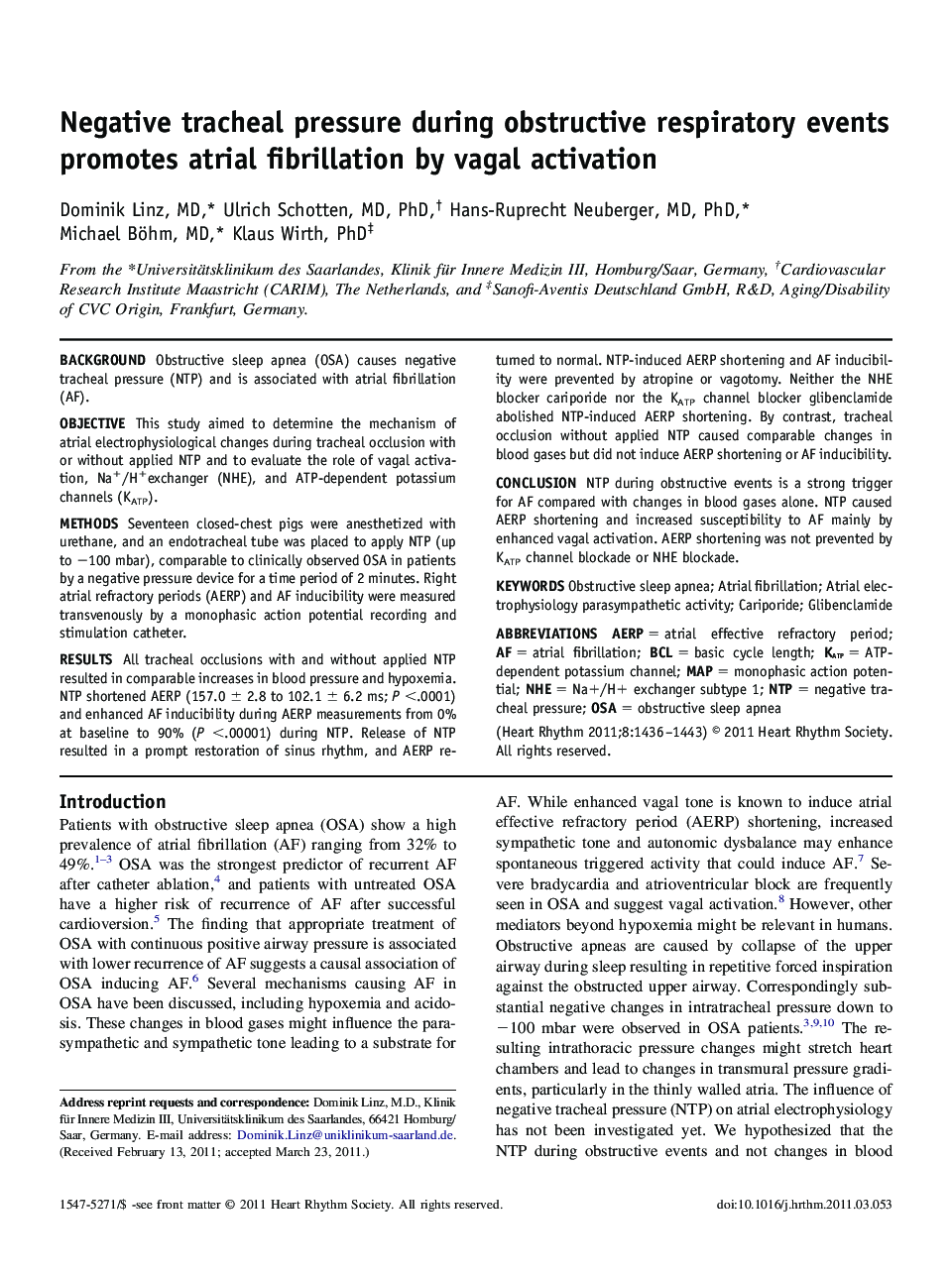| Article ID | Journal | Published Year | Pages | File Type |
|---|---|---|---|---|
| 5961514 | Heart Rhythm | 2011 | 8 Pages |
BackgroundObstructive sleep apnea (OSA) causes negative tracheal pressure (NTP) and is associated with atrial fibrillation (AF).ObjectiveThis study aimed to determine the mechanism of atrial electrophysiological changes during tracheal occlusion with or without applied NTP and to evaluate the role of vagal activation, Na+/H+exchanger (NHE), and ATP-dependent potassium channels (KATP).MethodsSeventeen closed-chest pigs were anesthetized with urethane, and an endotracheal tube was placed to apply NTP (up to â100 mbar), comparable to clinically observed OSA in patients by a negative pressure device for a time period of 2 minutes. Right atrial refractory periods (AERP) and AF inducibility were measured transvenously by a monophasic action potential recording and stimulation catheter.ResultsAll tracheal occlusions with and without applied NTP resulted in comparable increases in blood pressure and hypoxemia. NTP shortened AERP (157.0 ± 2.8 to 102.1 ± 6.2 ms; P <.0001) and enhanced AF inducibility during AERP measurements from 0% at baseline to 90% (P <.00001) during NTP. Release of NTP resulted in a prompt restoration of sinus rhythm, and AERP returned to normal. NTP-induced AERP shortening and AF inducibility were prevented by atropine or vagotomy. Neither the NHE blocker cariporide nor the KATP channel blocker glibenclamide abolished NTP-induced AERP shortening. By contrast, tracheal occlusion without applied NTP caused comparable changes in blood gases but did not induce AERP shortening or AF inducibility.ConclusionNTP during obstructive events is a strong trigger for AF compared with changes in blood gases alone. NTP caused AERP shortening and increased susceptibility to AF mainly by enhanced vagal activation. AERP shortening was not prevented by KATP channel blockade or NHE blockade.
